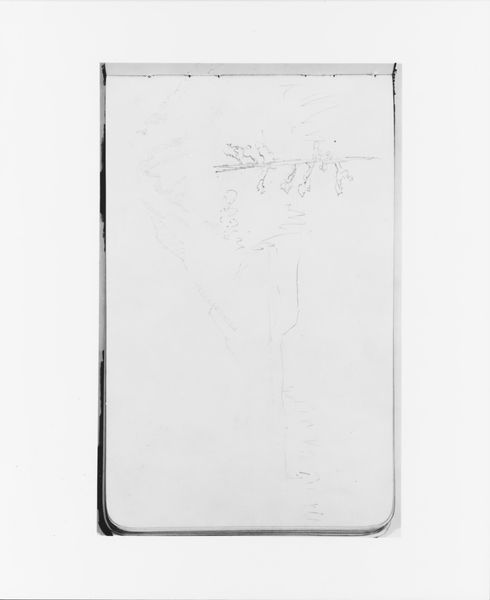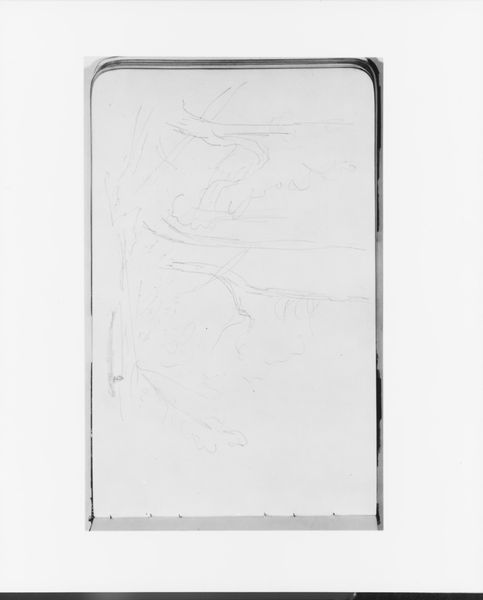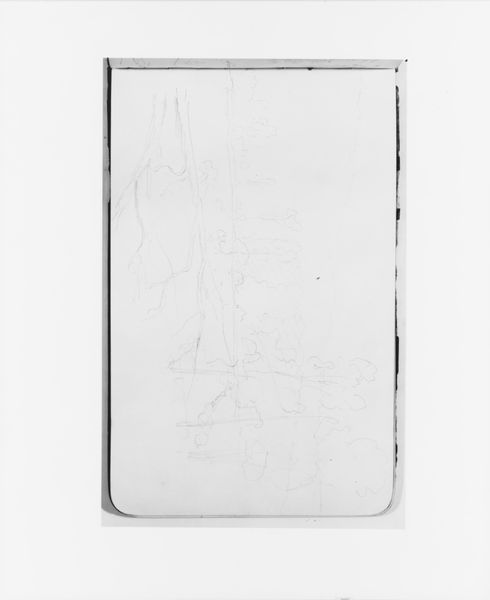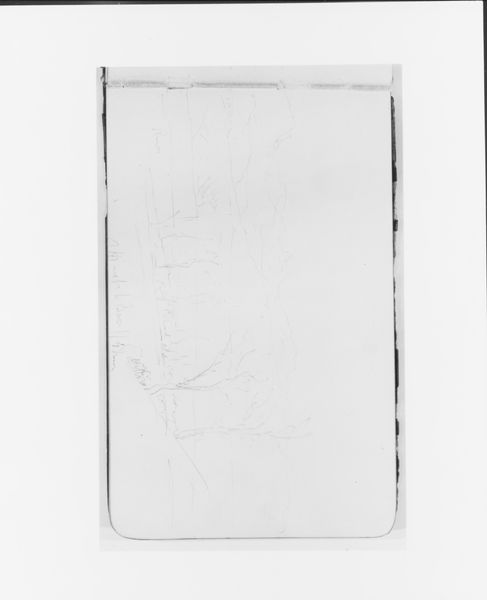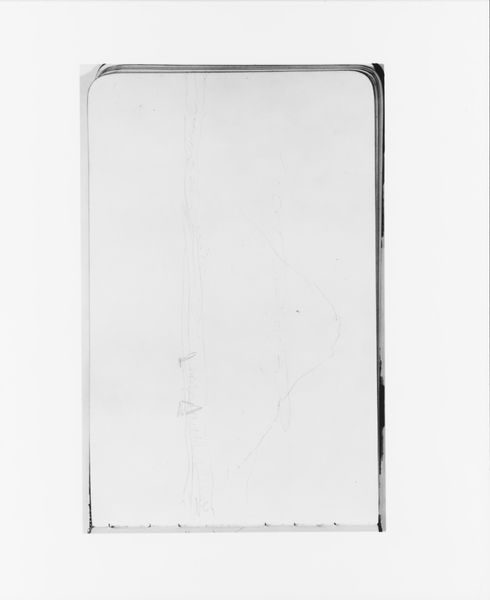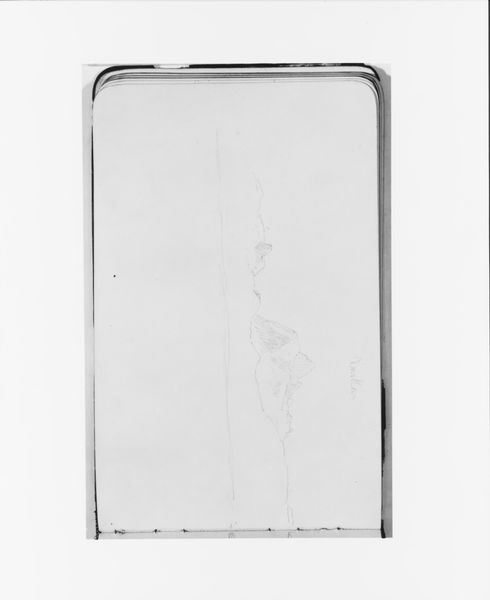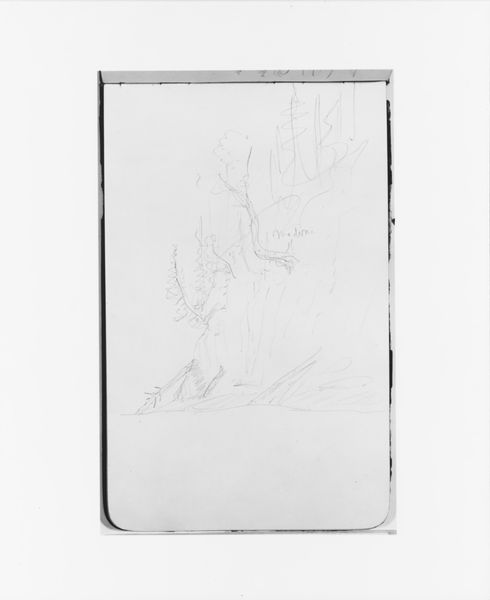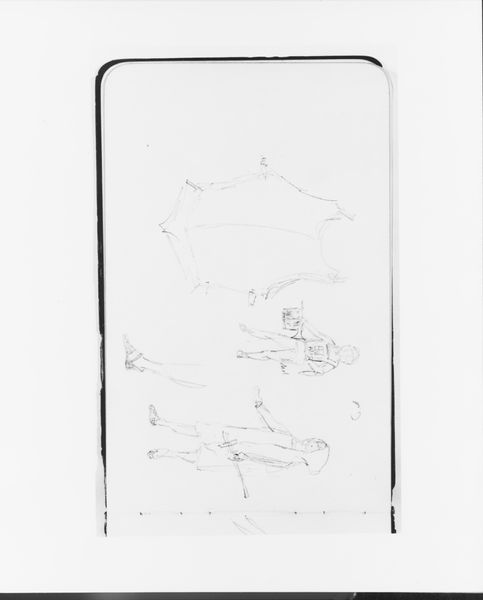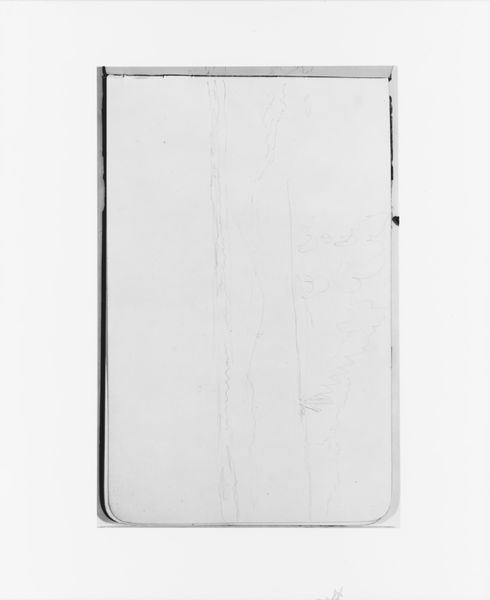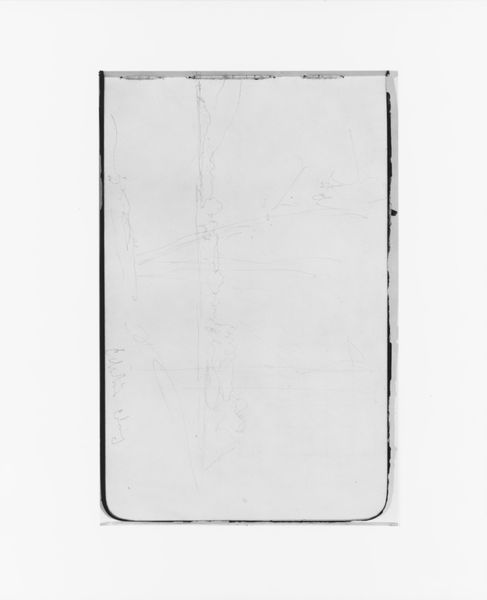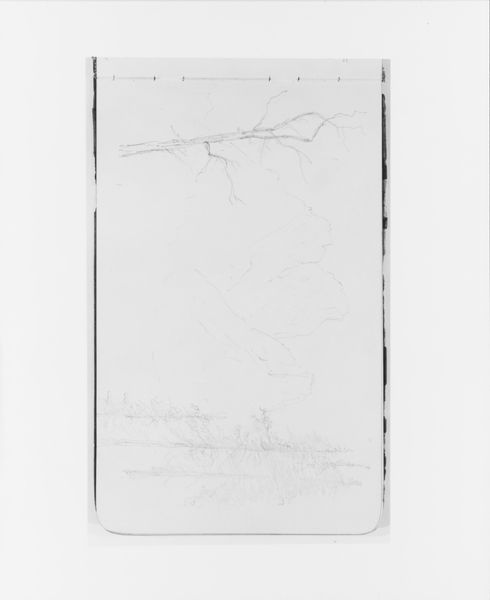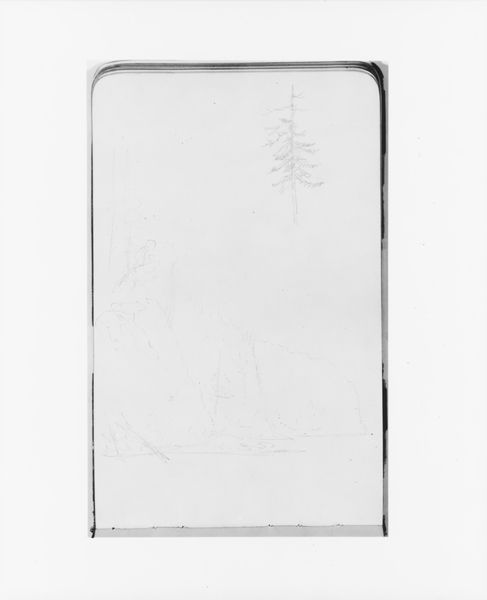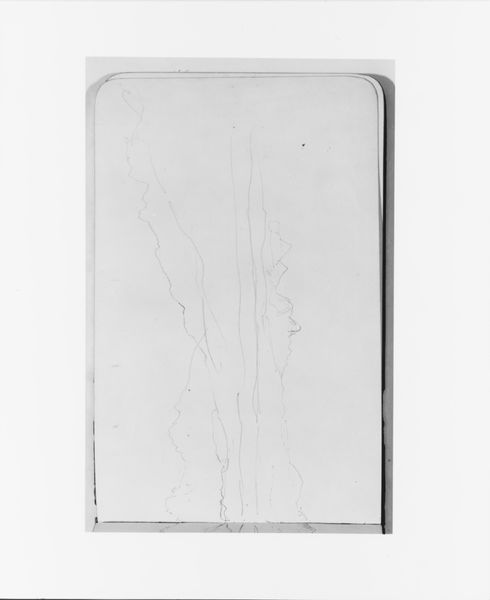
Dimensions: 4 3/4 x 7 3/4 in. (12.1 x 19.7 cm)
Copyright: Public Domain
Curator: This is Albert Bierstadt's pencil drawing "Bay Scene (from Sketchbook)," created around 1890. It’s currently held at the Metropolitan Museum of Art. Editor: The lightness is striking. It’s almost spectral. The lines are faint, barely there, giving it this ephemeral quality, like a memory fading. Curator: As a quick study in his sketchbook, it would have served a very practical purpose, cataloging elements and light in a specific environment, so the artist could later rework them into more substantial landscape paintings. We know he embraced photography to that effect, supplementing firsthand observation. Editor: Do you think it tells us something about Bierstadt’s anxieties? The barely-there quality hints at something not fully formed, like a premonition, all the anxieties of modernity. Curator: Or is it simply a process of distilling the world into its bare components, identifying and isolating aspects for later utilization, just like those landscape paintings? What materials and tools are in use; what’s being captured or recorded, and by what means? Bierstadt embraced the technological innovations of the time to supplement his practice of landscape painting. It really puts the "Hudson River School" into perspective. Editor: Well, I still see beyond the technical. Water, ships, what look like houses—they're sketched so delicately, there's a dreamlike quality, invoking a collective unconscious about westward expansion and its consequences. Curator: That may very well be so. Though I'd maintain this sketch embodies the convergence of industry, artistic process and perception, right down to the humble pencil used. It suggests a certain approach to land. Editor: Perhaps both can be true. Anyway, this pencil drawing offers a glimpse into Bierstadt's methodology while still suggesting much more. Curator: Yes, a preliminary material exploration that ended up invoking symbolism beyond the artist's initial practical concern.
Comments
No comments
Be the first to comment and join the conversation on the ultimate creative platform.

